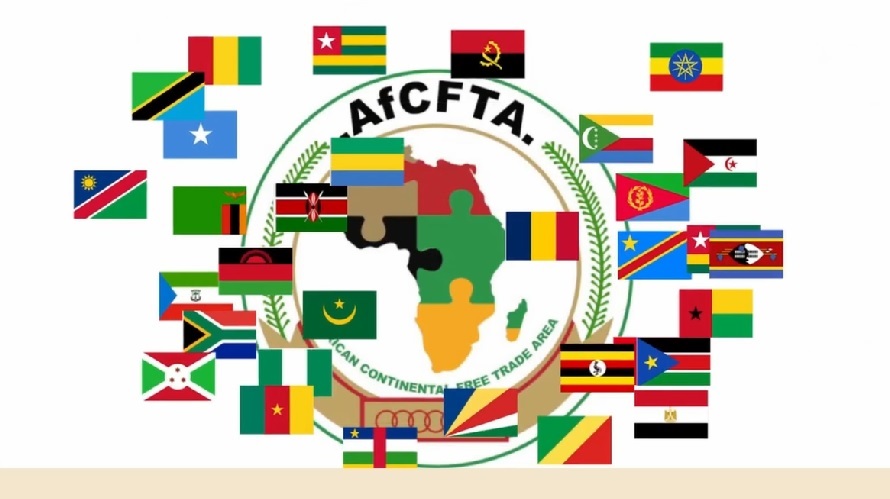
By: Nghiinomenwa-vali Hangala
Various African countries are facing economic shocks, such as production slowdown, export revenue fall, retrenchment, and competitiveness edge after the African Growth and Opportunity Act (AGOA) came to an end in September 2025.
Will the liberalisation of the African Continental Free Trade Area (AfCFTA) help cushion the blow dealt to African countries through the loss of the African Growth and Opportunity Act (AGOA)?
South African economist and policy analyst, John Stuart, provided analysis on the issue through the Trade Law Centre (Tralac).
He stated that in response to the AGOA matter, African leaders engaged in a last-ditch diplomatic push for a short-term extension while simultaneously pursuing a strategic pivot towards self-reliance. This pivot – the strengthening of the AfCFTA – has been placed at the centre of the continent’s primary buffer against external shocks.
Intra-African trade has rebounded to US$220.3 billion in 2024, supported by initiatives like the Pan-African Payment and Settlement System (PAPSS) to reduce reliance on foreign currencies.
In terms of Namibia’s trade within the AfCFTA context, in August 2025, the country exported goods worth N$4.4 billion to the African continent. On the other hand, the country imported goods worth N$6.3 billion from the continent, yielding a trade deficit of N$1.9 billion.
According to the Namibia Statistics Agency, a comparison of Namibia’s trade with Africa and the rest of the world reveals that intra-African exports account for 42.8 percent of total exports, while imports from Africa represent 51.3 percent of total imports.
Namibia’s exports were mostly absorbed by countries such as South Africa, Zambia, Botswana, the Democratic Republic of Congo, and Zimbabwe, with most imports coming from the same countries, except Zimbabwe, which was replaced by Eswatini for the month of August 2025.
Stuart explained that, besides looking inwardly, African nations are also attempting to diversify their trade relationships to the rest of the world, with a notable turn towards China, India, and other emerging markets.
The United States’ adoption of a unilateral and protectionist ‘reciprocal tariff’ regime has shifted global trade. This new policy, which includes a baseline 10% tariff on most imports and significantly higher duties for nations like South Africa (30%) and BRICS partners India and Brazil (50%), has effectively dismantled the 25-year-old AGOA framework and destabilised the rules-based multilateral trading system.
Stuart performed a simulation to compare AfCFTA merchandise trade liberalisation with US-tailored tariffs on Africa. According to him, “when AfCFTA liberalisation is simulated, we find interesting outcomes. As for all trade liberalisations, there are always winners and losers.”
While South Africa, Namibia, and Kenya are able to benefit from improved access to markets hitherto restricted to them, other countries such as Zimbabwe, Mozambique, and Nigeria experience smaller gains and in some cases, losses in certain sectors. Stuart indicated that this happens through changes in the value of trade.
While the simulations show that Zimbabwe, for instance, is able to increase the volume of trade to partners such as Mozambique and Mauritius, the value of trade often falls due to price adjustment from market forces.
“This is one of the outcomes of freer markets – the forces of competition tend to equalise prices,” Stuart noted.
He added that countries with more competitive cost structures and are able to adjust production faster tend to benefit more from generalised improved market access.
“If the value of trade falls, despite an increase in volume, the impact on GDP can be negative,” Stuart highlighted.
Speaking to whether the AfCFTA would be able to cushion the losses from the end of AGOA, he stated that “If we net off the impacts of the end of AGOA from those of AfCFTA, there is still a negative net effect.”
He explained that the AfCFTA is a worthy cause which shows promising signs of leading to gains from trade if African economies remain competitive and not complementary, as intra-African trade patterns are less prevalent than those with the rest of the world.
Stuart also noted that the countries displacing the US as export markets for African goods are not in Africa; they are in Europe, South Asia, and the Far East.
He advised African governments to do their best to negotiate the best possible deals they can – using Lesotho as an example. Secondly, by resolving deadlocks in the AfCFTA negotiations and pressing ahead with intra-African liberalisation, at least some of the losses cause by the end of AGOA can be mitigated.
However, Stuart also highlighted the existing challenges, such as uneven implementation. The implementation of the AfCFTA has generally been slow, with some countries lagging.
Namibia has an implementation strategy in place, and a national implementation committee has been established, though no public updates have been provided on the practical efforts to assist the private sector in taking advantage of the continental free trade area.
Stalled negotiations on rules of origin (ROO), which is a critical component for tariff liberalisation, especially for the vehicles and broad textiles sectors, has proven to be another challenge.
Stuart also flagged the persistent Non-Tariff Barriers (NTBs), such as high shipping costs, weak connectivity, and the lack of shipping lines and distribution hubs as considerable challenges to intra-African trade.
erastus@thevillager.com.na









